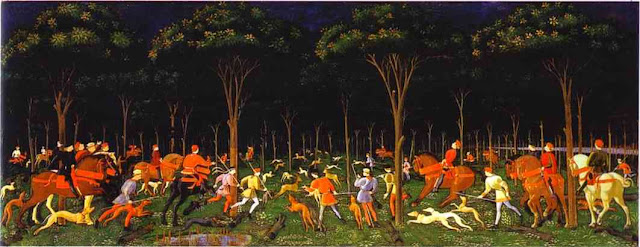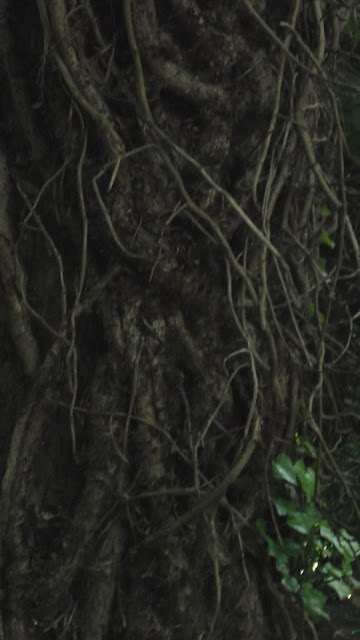Wow.
What a pleasure just to clear the kitchen table and fill it with lovely pencils, paper and piaints for my own pleasure and experimentation.
I loved the list of new and exciting ways to make marks. I could have spent six weeks just exploring each of them to the hilt.
I am particularly impressed with the negatives - bleach painting, rubbing out, and the making rubbings. Although I think I will have to try out a variety of different rubbers as the putty one I have doesn't give me the kind of control I would like for the rubbing out thing.
And the fixative technique - well! I had seen pieces that had transfers on them and wondered how it was done, thinking it woudl be some complicated photographic technique using software, and there it was, simple as a child's tracing paper transfer. Yippee!
All these things are getting me excited, and worried that I don't have enough time in my life to try them all out to the fullest. And that I will spend my energy doing that and not be able to decide which one I like best.
So, to start me off, here are the ones that appeal to me personally the most, and a bit about why I think that is.
Wax resist - I hadn't thought of doing this before, and I like the way it allows you to think one layer at a time without the next layer obliterating what you've done. The spirals let me make the focus move as it where - different shapes on different levels of the picture. I think there's a lot of potential here, and of course it can be applied to dyeing fabrics.
Bleach on coloured tissue - again, something I hadn't tried before that obviously has lots of potential. I like these ones where you can add something but it takes away what's there. It makes the mind boggle as to all the ways it could be used. Another one I want to experiment more with.
Block printing- in this case using the skin of a lemon. I found this very exciting and went a bit mad using everything I could find in the kitchen. Realising that I could control the intensity of the paint with pressure in particular parts of the lemon was a revelation and opens up all sorts of exciting possibilities. I like the feeling this one gives me, which is why I have chosen it for this blog.
Fixative transfer - aha, that's how they do it! I tried out different magazines and different rubbing implements and this was the best. I think I might look for a different kind of fixative spray too.
An image popped into my head today of myself peaking under a black cloth over my eyes. I am at the cave entrance to a new world here. I can't see through the darkness to the world beyond, but I know full well that everything is not as I had thought. Not because I could not see, but because I took my thoughts to be sights and ignored anything else. I'm not sure what I mean, but it involves switching off my head, to let me see. How very Zen.
I have not done anything like this way of going about drawing before as far as I can remember. I found it very liberating and enjoyable, and see well that it can add lots of different and new ways of doing things to my repertoire. I am starting to see more clearly how this exercise will help my textiles. And that I will want to come back to this exercise again and again as I develop my textile ideas so as to gain more techniques and ideas.
One thing that I found quite difficult to get my head into was the idea of drawing particular feelings or sensations. I suppose because this is a completely new idea for me - to start with that alone. I'm not sure how successful this was, although I did find it was becoming easier during exercise 4.
I think more three dimensional images work more powerfully, for me at least. For example, the collage representation of a pine cone really worked, with the hard thickness of it coming out at me and the striped colours of the magazine pages conveying the richness and striations of the material.
This page shows several attempts to represent the swirly furriness of two intertwined teddy bears.
(The charcoal on the right has a wavy pattern in it made with a comb).
I really enjoyed trying out different things to do this, and can now see that my previous method of working out how to represent something was severely lacking in experimentation. And lost a great deal of interest and intensity as a result.
As I went through the exercises I got more inventive, and tried out more new things. This one was a response to a woven throw I have on my sofa. I like the way the bleach came off the brush in an unpredicatable way, giving it more 'natural' variation.
I tried out printing with string, broccoli, bits of Easter palm, and lots of other things.
For the next section I went one step further and used more than one technique for each study, trying out different things on top of and with each other.
This one has a background of spots from making a rubbing over a metal sieve, and in the foreground using a comb dipped in gouache. It was almost a negative of the charcoal drawing for the teddy bear exercise, and it will be a useful addition to my library of techniques!
This is my exploration of the pineapple drawing in my sketchbook, using collage, lemon-skin printing, and fixative transfer. Again, I'm not sure it really gives the texture I had in mind, but it does give an idea of the cushions and spikes. And it's a good starting point for moving off into something more interesting.
This is my response to another one of the teddy bear studies, using washing-up scrubber printing round the outside, pencil rubbing of a thick spiral of paper, and fixative transfer lines on top. I also added some pencil marks to take the radiations into the outer part of it.
This one is special to me because when I was
making it something inside me took over making
the decisions about what marks to make and came

up with this fantastic three-dimensional circular thing in the middle that seems just right.
I found this one surprising and satisfying and would have to say that I enjoyed it most of all of them because of the surprise element.
Generally I most enjoyed working with rubbings and block printing, perhaps because of the physicality/ 3D nature of them.
I am already drawing in a more relaxed and inventive way in my sketchbook. This exercise has undoubtedly helped me to do this, as well as the exercise looking at mark-making by great artists.
I didn't try using watercolours or inks in this session. I intend to try these out next time I do something like this. I am looking forward to working on some of the images in my photo album and themes collections in this way... to see what happens!
How will these exercises enrich my textile work in future? Well, so many ways I can see already.
1. Through this exercise I have learned that trying out new and crazy things often gives interesting and complex results.
2. That I don't have to stick with one technique or style of thing at a time, or one degree of detail over the whole of a piece.
3. I don't think I really 'got' before that nothing, however artificial, has an even texture all over in real life, and especially not when you're representing it artistically.
4. Oh, the obvious one that I won't find the good techniques without risking a load of poor images.
5. And that the more I experiment the more techniques will be available to me
6. Strangely it has also made me feel freer to use colour in drawings.
7. And finally, that almost anything can be used to make interesting marks!














































